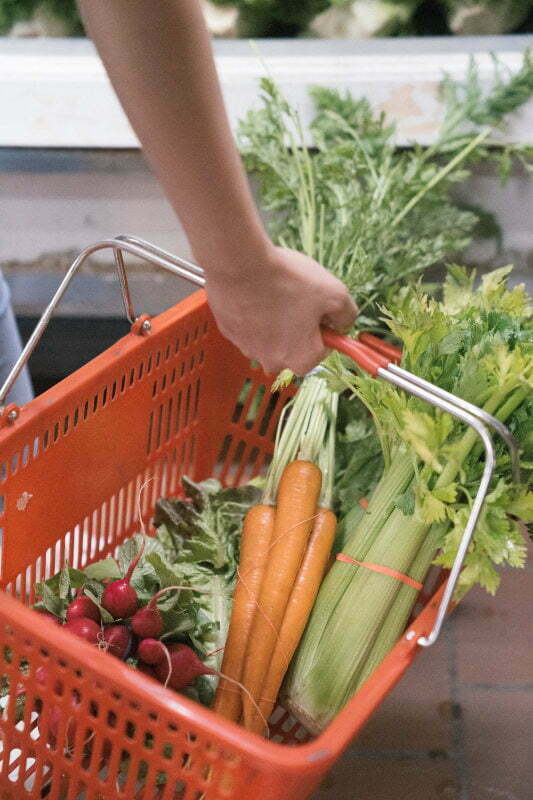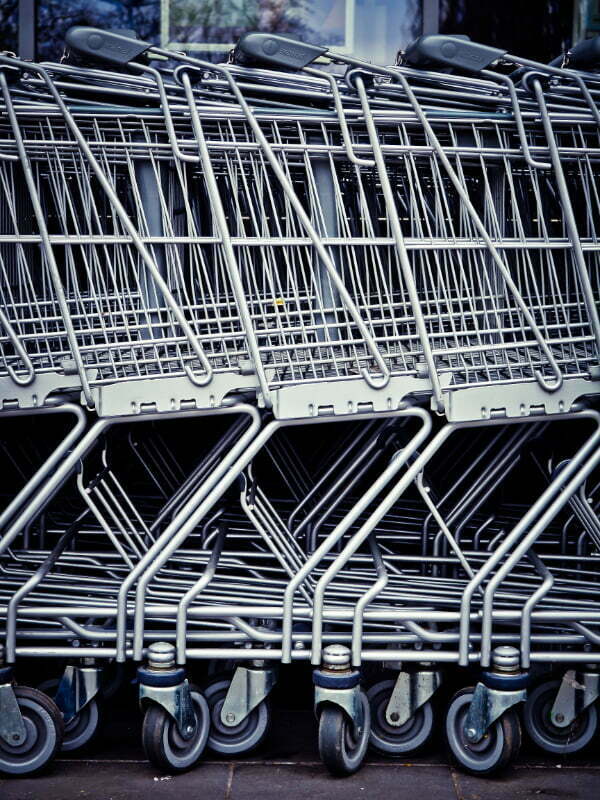With several responsibilities and preoccupations occupying our minds while inside the store, relying on a shopping list allows for easy and focused shopping.
Perhaps you’re focusing on completing necessary errands and duties throughout your day. Or maybe, you’ve made arrangements to dine with friends after work hours. Or you’ve got a big project at work where you are required to quickly work on it as its submission deadline quickly approaches.
On top of all that mental noise, there’s the added pressure of trying to remember what items and food you need to buy.
My solution? Don’t think about it! Just write it down. You can use jot it down on paper. Moreover, a plethora of apps are available with the feature of sending reminders regarding grocery shopping. They provide an option of including products that cross your mind while making a list!
This simple task can significantly simplify our lives in the long run. By doing it, we can avoid the pressure of trying to remember everything before heading out for errands and reduce the risk of forgetting something vital amidst the rush of our day-to-day activities.
What is a Shopping list?
One clever strategy for staying organised, saving cash, and avoiding future regrets is simply jotting down your required items in advance. A comprehensive shopping list allows us to minimise impulsive spending and make informed choices during our errands.
One can avoid purchasing unnecessary items or aimlessly browsing through stores by creating and referring to an organised shopping list. This practice ensures efficiency and appropriate utilisation of funds.

The benefits of having a shopping list.
- Helps reduce impulse buying and save money. When we go grocery shopping without a list, we’re inundated with choices—no matter what aisle we’re in, there are probably fifty items we could put in our cart right then and there.
By sticking to this well-planned list, one avoids impulsive purchases of tempting convenience foods or attractive-looking items. - Be more organised and mindful of what you already have in your kitchen, so if the urge to buy something strikes while shopping, it’s less likely to happen.
- Optimises your shopping experience by preparing a detailed shopping list beforehand. A well-structured checklist prevents wasted trips down unfamiliar aisles. Furthermore, having a shopping list reduces confusion regarding what goes best with unanticipated purchases.
4. It’s worth keeping an updated list handy, as this simple act may decrease instances of leaving essential items behind or becoming overwhelmed when returning home from the store (or ordering online).
Planning meals becomes effortless while utilising a written list. This allows one to take stock of what they already have, avoiding unnecessary expenses and wasted food resulting from forgetting ingredients until it’s too late.
5. It definitely helps you stick to a budget.
Buy only what you need, rather than buying more and throwing away the excess food. It helps prevent food waste by ensuring all ingredients in your fridge aren’t going bad simultaneously (or being thrown out before they have a chance to spoil).
6. You’ll avoid spending more money than you planned to.
7. You’re less likely to get distracted by discounts, sales and deals.
How To Create A Grocery List
- Plan meals and snacks.
- Create a grocery list using a piece of paper or an app (eg. Evernote).
- Check your fridge, freezer, and pantry for available items.
- Make sure to deduct recurring items from the pantry and fridge.
- Plan your shopping trips. Write down all the things you need to buy. Make sure to include items you need for the recipes you’re planning to cook to avoid making multiple trips to the grocery store. Write down the required quantity for each item. Be sure to include everyone’s favourite foods in your plans.
- Remember to include beauty products and toiletries.
- Group items by area in the store.
- Create a master shopping list on your computer or using a notebook. This list contains recurring products used all the time.
- Create an ongoing or recurring grocery list
- A good practice before grocery shopping is carefully checking and reviewing your shopping list.
Tips
- Bring your shopping list with you when you go shopping.
- If possible, shop in one store per week or at least once every other week.
- Keep track of sale prices in the flyers, and then plan accordingly.
- Bring enough money to buy everything on your list.
- Check the expiration dates of food items before you buy them.
- Make sure your family and friends know you are following a shopping list, and ask them to help keep you accountable. You can include this as part of your family’s chores!

- Don’t go shopping when you are hungry. Eat before going grocery shopping. It will help to prevent overbuying food. If your goal is to remain committed to your intended shopping items, it’s important not to forget the significance of avoiding impulsive buys, which could arise due to hunger during a grocery run. You’ll be less likely to buy chips or candy bars while shopping—and more likely to stick with the items on your list (which hopefully includes some healthier foods).
- Stick to the lists while shopping, and don’t just pick up any item that catches your fancy (I know this isn’t easy!)
- Shop alone, if possible.
- Get permission from your partner or friend before buying something (if they say no, then it’s not worth arguing about).
- Making practical purchasing choices is key – don’t be swayed by the appeal of a bargain. Do you really need to buy that item that’s marked down? Ask yourself, do I need this item someday? If the answer is no or not sure, it might be good not to buy it.

A Small Shopping List Sample
Fruit and Vegetable
Apple
Banana
Celery
Carrot
4 potatoes or sweet potatoes
Condiments and Sauces
2 jars of peanut butter
Brown sauce
1kg of sugar
Milk, Bread and Diary
1 dozen Eggs
1 loaf of bread
1 pint of milk, including regular and nonfat varieties
Meat and Fish
1 whole chicken
500g of Salmon
Conclusion
There you have it—some practical tips to help you make sure that the most essential items don’t get overlooked.
Write a list before you head to the grocery or supermarket. We recommend that you remain steadfast in upholding your meticulously crafted shopping list for optimal results. Remember to include everything you need on there. You can opt to return any items not on your shopping list.
Furthermore, suppose any surplus products are procured along the way. In that case, evaluate each item’s necessity and omit unnecessary purchases accordingly.
By minimising your grocery expenses, you can grow your savings substantially. Happy Shopping!
Watch a Video Summary
Images Used
Photo by Pixabay: https://www.pexels.com/photo/booth-branding-business-buy-264636/
Photo by Lisa Fotios: https://www.pexels.com/photo/several-apples-beside-bread-pack-and-brown-paper-bag-1992912/
Photo by Pixabay: https://www.pexels.com/photo/aluminum-black-and-white-business-cart-264529/
Photo by Mike Jones: https://www.pexels.com/photo/close-up-shot-of-a-person-holding-a-grocery-basket-with-vegetables-8805182/





0 Comments